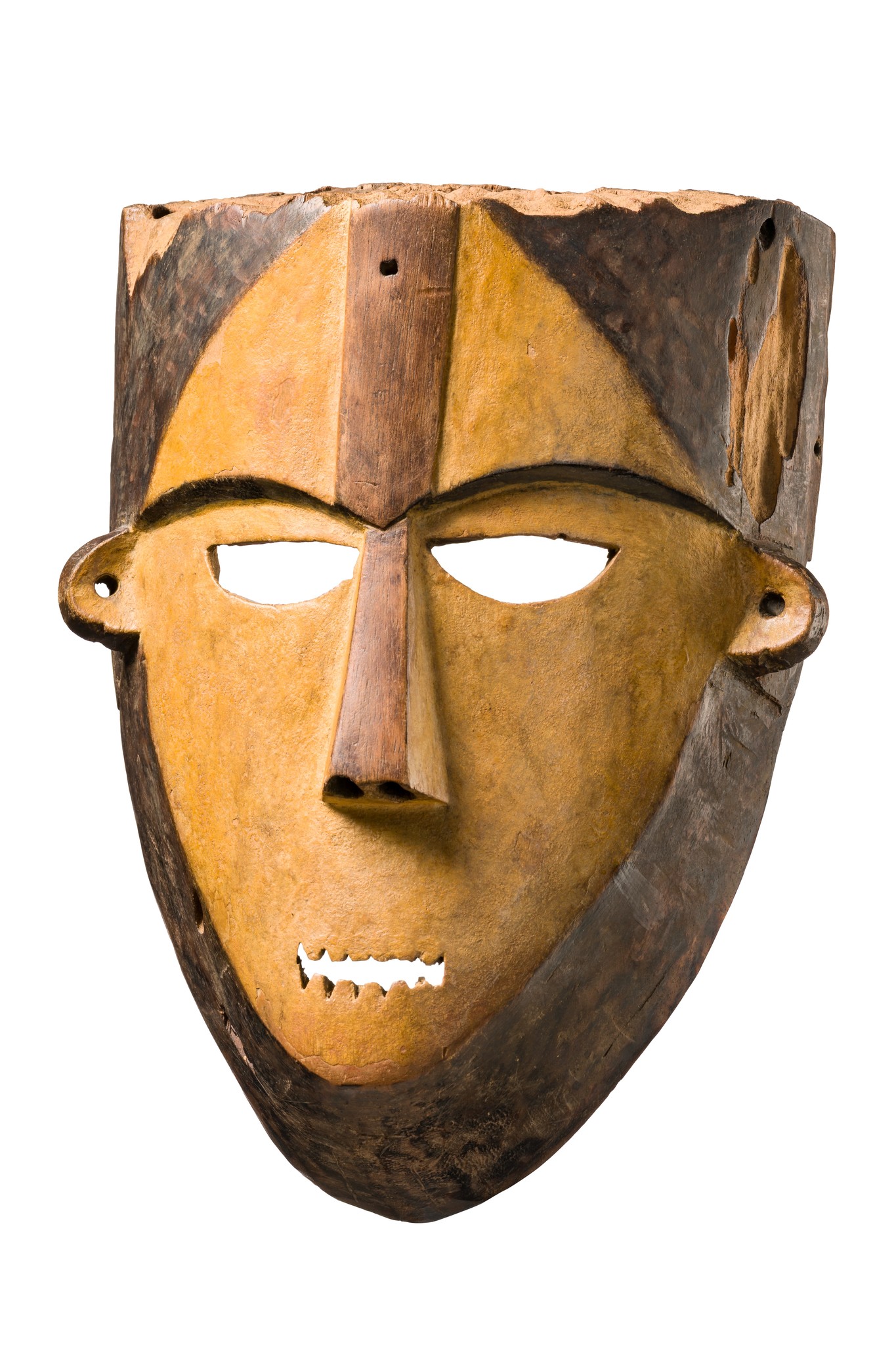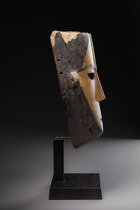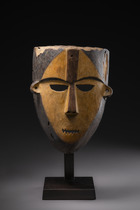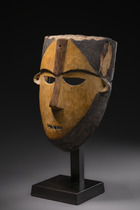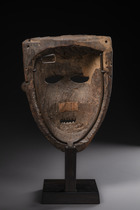Masque facial anthropomorphe "pongdudu" ou "kpongadomba" · R. D. Congo, Boa · ID: 3052540
Belgian Private Collection
Cole Harrell, New York, USA
Description
wood, kaolin, black and brown pigment, handwritten collection no. “RG.15.09.1938”, old collection label “15.19”, insect caused damage, rest., base
Joseph Armand Oscar Hutereau (1875–1914), a Belgian officer who explored the Congo at the beginning of the 20th century under King Leopold II, reported on masks used by the Boa. This type of mask, referred to as “pongdudu”, was said to have served the purpose of “frightening the enemy.” It was reportedly worn by “sorcerers” and used in both “warfare and dances.”
Scholar Lucien Burssens adds that, in the early years of the century, a war mask known as “kpongadomba” existed, which was believed to render its wearer invincible in battle. Commissioned by the chief, the mask was carved specifically for the bravest and most capable warrior, who would be entrusted with leading the group into combat. However, around the turn of the 20th century, such masks gradually lost their function, as the Boa population, following defeat by colonial forces, came to recognize that the spiritual power attributed to the masks no longer guaranteed invincibility.
For a comparable, widely published mask from the Willy Mestach Collection, see AHDRC 0015175
The reduced formal language and contrasting two-tone colour scheme, which plays with geometric shapes, influenced modern artists such as Pablo Picasso, for whose 1908 work “Tête d’homme”, a Boa mask served as a source of inspiration (see Rubin, 1984, p. 304, fig. 399).
A digital X-ray of the mask was taken, and a UV fluorescence examination was conducted. The analyses indicate that this is an authentic, older work that was partially revised at a later date for ritual use. Traces of the original polychromy remain visible in certain areas. The yellowish pigment corresponds to the color spectrum characteristic of ethnic groups from the Uele region.
Littérature comparée
Rubin, William (Hg.), Primitivismus in der Kunst des zwanzigsten Jahrhunderts, München 1984, p. 304 f.
Publications
AHDRC: 0223639

